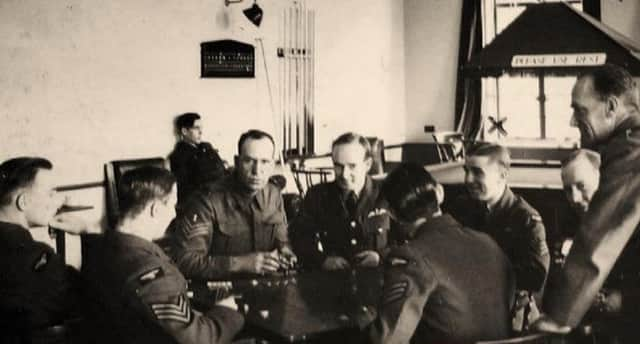South Shields' own 'Duke' of Wellington


The story of how Pilot W/Officer Purdew not only took part in this historic event, but also went on to be highly decorated for his wartime heroics, is told today by local historian Dorothy Ramser.
As Dorothy explains Thomas Purdy was born in South Shields in 1913 to parents George Lancelot Laidler Purdy, a colliery fitter, and Elizabeth, a housewife, who lived at 20 Harton Rise, South Shields.
Advertisement
Hide AdAdvertisement
Hide AdAfter joining the RAF, Thomas Purdy went on to fly Wellington bombers for the 9th Squadron.
It was in this role that he found himself on the day of September 4, 1939.
“Fourteen Wellington bombers, one of which was flown by Tom Purdy, attacked the entrance to the Kiel Canal, in what was the first raid of the war,” reveals Dorothy.
“As a result, the first air raid warnings were sounded in Germany during this raid which resulted in two of Tom’s squadron’s aircraft becoming the first to be shot down on the western front.”
Advertisement
Hide AdAdvertisement
Hide AdThree months later, Bomber Command, which included Tom’s 9th Squadron, made three attacks on the important German naval base at Wilhelmshaven.
During the last raid on December 18, which involved 22 Wellingtons, Tom’s aircraft was heavily damaged.
“The Wellingtons had orders to attack German ships outside the harbour,” says Dorothy.
“However, the enemy vessels were inside the harbour, so the bombers turned for home.
“This was when the German fighters struck.
Advertisement
Hide AdAdvertisement
Hide Ad“First ME109s then ME110s pursued the bombers back across the North Sea.
“The Wellingtons did not have self-sealing fuel tanks, so they easily caught fire.
“Ten Wellingtons were shot down and two more were forced to ditch before reaching Britain while three more were destroyed in crash landings.
“Thomas Purdy must have been a skilful flyer as he was able to force land the bomber safely, without his plane’s undercarriage, ensuring that he got his wounded crew swift treatment back home.
Advertisement
Hide AdAdvertisement
Hide Ad“His Wellington also succeeded in destroying three enemy aircraft during the pursuit across the North Sea.”
As a result of the raids carried out by Tom Purdy and his colleague, lessons were learned, and the Wellington’s fuel tanks were quickly modified, and guns added on either side of the aircraft.
Meanwhile, Bomber Command abandoned daylight bombing because of the raid on December 18, and resorted to night-time bombing only.
Dorothy went on to say that in April 1940, Tom’s squadron moved from Honington to Lossiemouth, in Scotland, in order to support the allied expedition to Norway.
Advertisement
Hide AdAdvertisement
Hide Ad“During the Battle of Britain, Bomber Command had two objectives – to deter the German invasion fleet from setting sail and to attack the 1,600 ships and barges massing for the operation,” continues Dorothy.
“The ports were heavily defended with 6,700 light and 2,600 heavy guns from Dunkirk to the Scheldt estuary at Antwerp.
“Despite this, the RAF bombers inflicted heavy damage on the invasion fleet, with the coastline, from Dunkirk to Calais, known as the ‘Blackpool Front’ – as the whole French coast was ablaze.
“Tom made successful strikes on invasion barges on the September 21 before being transferred from 9th Squadron to 57th Squadron when he was flying a Wellington bomber Z1097, called Gorakpur, after an Indian Rajah who had paid for it.
Advertisement
Hide AdAdvertisement
Hide Ad“At 5.15pm on December 27, 1941, Tom took off in his Wellington to attack the marshalling yards of Dusseldorf.
“His crew were Sgt Maxwell Joseph Cronin NZ Airforce, 2nd Pilot, Flying Officer Ronald Cave Scarlett Australian Air Force, observer bomb aimer, Sgt Stanley Barraclough, wireless operator, Sgt Robert Frederick Aldous, front gunner and Walter James Poulton, rear gunner.”
Tomorrow: Tragedy strikes, and tributes to a true South Shields hero.